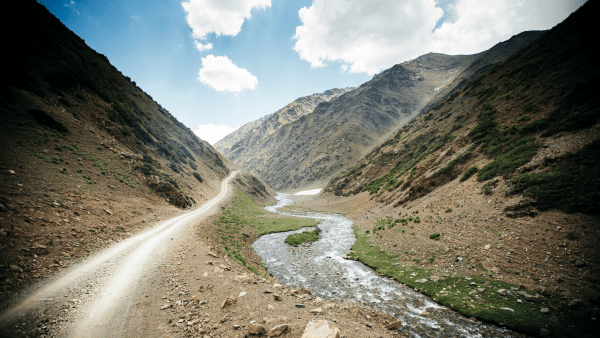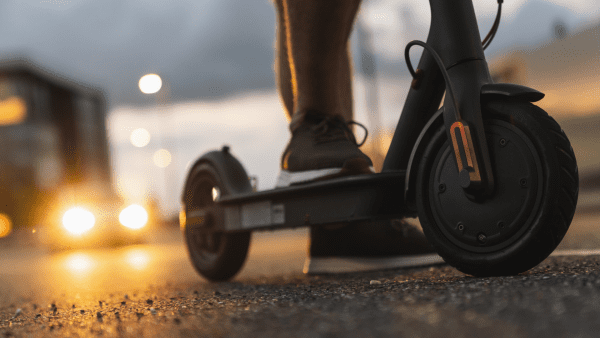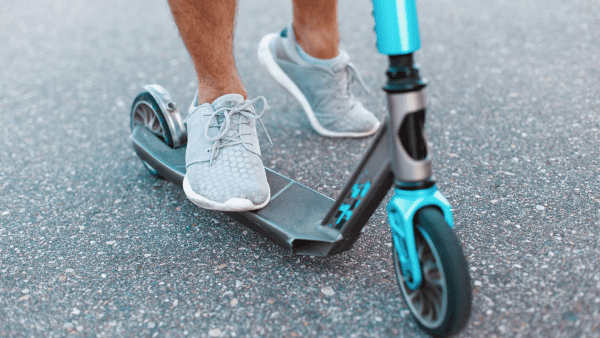Whether we’re zooming down city streets, exploring off-road trails, or cruising along beach paths, scooting is an exhilarating experience. But, as with any form of transportation, safety must be our top priority.

At FamilyHype, we understand the importance of fun and safety going hand in hand. We’ve put together this guide to help you understand your scooter better and ensure secure rides on all sorts of surfaces. We’ll cover essential protective equipment and provide tips for navigating different environments – from bustling urban pedestrians to sandy beach paths.
Let’s get started on this thrilling journey towards becoming responsible scooter enthusiasts who not only enjoy the ride but also serve as examples for others in upholding safety standards. For those interested in sustainability and modern options, electric scooters are an excellent choice worth considering.
We hope you find this guide helpful and invite you to share your experiences, feedback, and opinions in the comments below. After all, we’re part of a larger scooter community and have a role to play in keeping it secure while enjoying the freedom that scooters offer us.
Key Takeaways
- Importance of regular pad maintenance and high-quality pads
- Choosing the right footwear for better control and stability
- Terrain assessment and suspension adjustments for off-road adventures
- Proper maintenance is crucial for scooter safety
Understanding Your Scooter
Before zipping around off-road, it’s important that you really get to know your vehicle and understand how it works.
First off, let’s tackle scooter maintenance. Regular check-ups can help you avoid breakdowns and accidents. We’re talking about inspecting the tires for wear and tear, checking the brakes regularly, and ensuring lights are working correctly – basically, everything that makes your ride secure and smooth.
Next up is balance techniques – a vital skill in mastering any kind of terrain. Practice maintaining equilibrium while turning corners or riding uphill; this will greatly enhance your control over the scooter.

Remember, understanding your ride is only half the battle won. Along with these tips, using appropriate safety equipment significantly amplifies protection during rides on all surfaces.
Let’s delve into that next!
Safety Equipment
Next up in our journey to safer scooter rides, let’s delve into the critical topic of protective equipment. We can’t stress enough the importance of helmets and pads; they’re your best defense against injuries when things don’t go as planned.
Equally vital is choosing the right footwear, which ensures better control and stability while you zip around on your scooter.
Importance Of Helmets And Pads
Don’t underestimate the value of a good helmet and set of pads when scooting on different surfaces, as they’re fundamental for ensuring your rides are both fun and secure. Wearing them not only protects you from injuries but also boosts your confidence, allowing you to fully enjoy the exhilarating experience.
A helmet significantly reduces the risk of head serious injury, and concussion prevention is crucial. So, wear a helmet!
Knee and elbow pads shield these vulnerable areas during falls.
Regular maintenance ensures they offer optimal protection.
High-quality pads provide comfort without restricting movement.
Protective gear signals responsible behavior to others.
Remember, we’re all about serving each other in this community. So, let’s prioritize safety first!
Coming up next: how choosing suitable footwear can further enhance your scooter safety.
Choosing The Right Footwear
Choosing the perfect pair of shoes can truly revolutionize your scooting experience. Footwear durability and comfortable designs are essential aspects to consider, enabling you to enjoy long rides without discomfort or safety concerns. We understand that selecting the right footwear might seem challenging, but it’s a crucial part of ensuring fun and safe scooter rides.

Look for shoes with non-slip soles for better grip on the scooter deck. This decreases the chance of slippage while accelerating or braking. A good pair should also provide enough ankle support and ample cushioning to absorb shocks from uneven terrain.
With our feet securely covered, we’re ready to tackle different surfaces confidently! Up next, let’s delve into navigating through one of the trickiest surfaces – urban roads.
Urban Roads Riding
Navigating the bustling urban roads on a scooter can be quite an adventure. We understand the thrill, but it’s crucial for us to master maneuvering through traffic and ensuring our vehicle is consistently visible to motorists.
Let’s dive into these key aspects further, shall we? Remember, safety is our top priority, even as we enjoy zipping around the city streets.
Maneuvering Through Traffic
Weaving your scooter in and out of traffic can indeed be a thrilling experience, but it’s essential to prioritize safety to keep the thrill alive. With proper traffic navigation techniques and defensive riding strategies, we can confidently maneuver through even the densest city congestion.
To help us ride safely in oncoming traffic, always stay alert for unexpected movements by other road users. Keep a safe following distance to react swiftly. Use hand signals to communicate our intentions clearly.
Remember, empathy is key here; understanding that everyone wants to get to their destination securely helps foster patience on the roads.
As we transition into ‘Staying Visible To Motorists’, let us remember that visibility plays an integral role in ensuring our security amid bustling city traffic.
Staying Visible To Motorists
Just as we learned to navigate the hustle and bustle of traffic, it’s equally crucial that we stay visible to motorists. Being seen is a significant part of scooter safety, especially when riding on busy urban roads. Reflective clothing can make a big difference here; this material shines brightly in car headlights, making us more noticeable to drivers.
It’s not just our attire that matters – light attachments on our scooters are another effective visibility tool. These lights illuminate our path and signal our presence to others sharing the road with us.
So let’s gear upright, light up bright, and secure rides every time! As we continue this journey towards safer scooting, let’s shift gears and explore how these security measures hold up during off-road adventures.
Different Terrain Adventures
Tackling off-road adventures on your scooter can be a thrilling experience, but it’s crucial to ensure proper preparation for the unique challenges this terrain may present. This isn’t just about staying safe; it’s also about serving those who share the trail with us.
- Terrain Assessment: Before we hit the dirt, we should always assess the ground conditions and adjust our riding strategies accordingly.
- Suspension Adjustments: Depending on how rough or smooth our path is, we might need to tweak our scooter’s suspension for optimal performance and avoid losing control.
- Equipment Check: Ensure that all gear, including the helmet and protective clothing, is in good condition.
- Practice Courtesy: Remember that we share off-road spaces with others – cyclists, hikers, wildlife – and should strive to minimize disruption.
Next up: mastering beach path cruising while keeping safety top of mind!
Beach Path Cruising
Navigating through sand and loose surfaces can indeed be tricky, but we’re here to guide you on how to handle these challenges while ensuring your scooter remains undamaged from saltwater.
We understand the thrill of beach path cruising, yet it’s crucial to remember that our adventurous spirit should not compromise the longevity of our beloved scooters.
Let us dive into this discussion armed with insights and practical tips – both for conquering sandy roads and protecting our scooters from the unforgiving effects of saltwater damage.
Dealing With Sand And Loose Surfaces
Surfing through sandy or loose surfaces on your scooter can be a unique challenge, requiring you to adapt your riding style for safety and control. Sand resistance is real, and it’s something we should take seriously to avoid accidents. Similarly, dune navigation needs careful balance and calculated movements.
To help ensure a safer ride, here are some tips:
- Always maintain a steady speed; too slow can lead to sinking in the sand.
- Keep your weight back to ensure better traction.
- Try not to make sharp turns as this could cause the scooter to skid.
- Practice makes perfect in mastering sandy roads.
Mastering these skills will provide an exhilarating yet safe experience!
Now let’s talk about protecting our scooters from another beach hazard – saltwater damage.
Protecting Your Scooter From Saltwater Damage
While you’re busy mastering the art of zipping through sandy landscapes, don’t forget about the hidden danger that saltwater can pose to your ride. It is very dangerous to expose your scooter to saltwater could lead to corrosion and ultimately shorten its lifespan.
We understand how much you value serving others with efficient transportation; thus, corrosion prevention is crucial. Start by avoiding scootering through sea spray or standing puddles on beach paths. After a coastal ride, give your scooter a thorough freshwater rinse followed by a complete dry-off. This simple yet effective saltwater cleaning technique helps ward off any potential damage.
Armed with this knowledge, you’re well-equipped to keep your trusty workhorse in top shape for longer.
Now let’s move forward and delve into essential safety tips for ensuring smooth rides under various conditions.
Scooter Safety Tips
Ensuring your safety should always be a top priority, regardless of the terrain you’re riding on. We can’t stress enough how vital proper maintenance is to scooter safety. It’s not just about keeping your ride smooth; it’s about preventing accidents before they happen.
Regular check-ups are crucial to ensure that all parts function correctly.
Adapting to different weather conditions also plays a key role in staying safe. Rain or shine, hot or cold, we must adjust our driving style and gear accordingly. If it’s raining, take extra caution, especially on slippery surfaces and roads due to wet weather; during hot days, stay hydrated and avoid long exposure to sun rays.
Remember, no thrill compares to the importance of safety! Let’s promote responsible scooting for everyone’s benefit.
Conclusion
We’ve explored the different terrains for scooter rides, from urban roads to sandy beaches. Safety is always paramount when it comes to scooters, so make sure to equip yourself with the right safety gear and understand your scooter’s capabilities.
Whether it’s an off-road adventure or a leisurely beach cruise, we believe you’re now well-prepared for any ride. Enjoy scooting, and make safety your priority!
If you’ve had a great experience with your scooter, we’d love to hear about it at FamilyHype. We encourage you to share your stories, tips, and opinions to help other scooter riders.
We also suggest following safety guidelines set by organizations such as the Association of Safe Scooter Riders, the American Association of Scooter Riders, and the National Scooter Safety Council.
Don’t forget your safety should always be a priority when it comes to scooters.
Frequently Asked Questions (FAQs)
What Is An Off-Road Scooter?
An all-terrain scooter is designed to handle various off-road or uneven roads with features such as larger wheels, rugged tires, and enhanced suspension. When you choose an off-road scooter, make sure it’s well-equipped for a smooth ride.
What Is The Safest Scooter?
The safest scooter is subjective and depends on factors like design, construction, and adherence to safety standards. Making a choice involves considering multiple aspects, such as battery life and the front and rear braking systems.
Can Scooters Handle Hills?
Scooters’ ability to handle hills depends on factors such as motor power and torque, with some models performing better than others. Pneumatic tires can also improve a scooter’s hill-climbing capability.
Can You Off-Road With A Scooter?
Off-roading with a scooter depends on the scooter’s design and capabilities, as some models are specifically built for off-road use. If you desire a comfortable ride even on rough terrain, ensure to check the scooter’s specs.
What Is The Difference Between Off-Road And All-Terrain?
Off-road and all-terrain are often used interchangeably, both referring to the ability to handle various off-road surfaces. The travel range might differ based on the type of terrain.
What Does Off-Road Wheels Mean?
All-terrain wheels typically refer to wheels designed to handle different types of surfaces, including rough or uneven terrain.
Can Electric Scooter Go On Rough Surfaces?
Electric scooters’ ability to navigate rough terrain depends on their design and capabilities, with some models better suited for rough terrain than others. Opting for a heavy-duty electric scooter can be beneficial in such cases.
What Is An Off-Road Mobility Scooter?
An off-road mobility scooter is a rugged scooter designed for outdoor use on various surfaces, typically featuring features like larger wheels, enhanced suspension, and a sturdy build.
What Is The Difference Between Street And Stunt Scooter?
Street scooters are designed for commuting or everyday use on paved surfaces, while stunt scooters are built for performing tricks and maneuvers in skate parks or on ramps. The best stunt scooters usually have specialized parts for improved performance.
What Is The Difference Between Scooter And Motor Scooter?
The term “scooter” is often used to refer to both kick scooters (human-powered) and motor scooters (powered by an engine or battery), with motor scooters typically having a seat and an engine for propulsion.
DISCLAIMER (IMPORTANT): This information (including all text, images, audio, or other formats on FamilyHype.com) is not intended to be a substitute for informed professional advice, diagnosis, endorsement or treatment. You should not take any action or avoid taking action without consulting a qualified professional. Always seek the advice of your physician or other qualified health provider with any questions about medical conditions. Do not disregard professional medical advice or delay seeking advice or treatment because of something you have read here a FamilyHype.com.